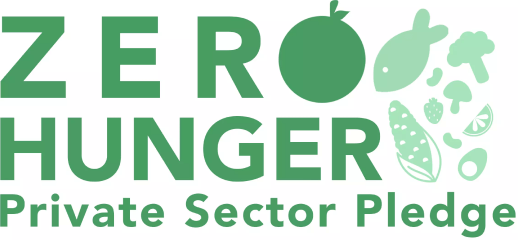
Why private and public sectors need to join forces to end hunger
According to the latest figures from The State of Food Security and Nutrition in the World report, between 691 and 783 million people in the world were estimated to have faced hunger in 2022. By 2030, the report projects that nearly 600 million people will be chronically undernourished. These figures highlight that we are currently way off-track in our collective goal to end hunger by 2030. Support to the transformation of agrifood systems is necessary to tackle the world’s food security crisis.
The public investment gap
A number of reports from leading research institutions and international organisations costed the amount needed to end hunger by 2030. They estimated that governments – both donors and recipients – will collectively need to invest an additional US$33 to US$50 billion per year until 2030 to achieve SDG 2 – Zero Hunger.
Unfortunately, governments do not have the means to do so on their own. From ongoing wars and conflicts and the economic fallout from the global pandemic, public coffers are squeezed. We are facing an unprecedented number of humanitarian and climate catastrophes further diminishing prospects to fund long term development projects.
The public sector cannot single-handedly eradicate hunger. Achieving this goal requires the collaboration and know-how of the private sector based on a commonly agreed roadmap.
Leveraging collaboration
Launched during the United Nations Food System Summit in 2021 with a simple goal, The Zero Hunger Private Sector Pledge aspires to mobilise the business community to end hunger. It calls on companies of all sizes and from around the world to join the global movement to end hunger.
Since its launch, the Pledge has raised over $600 million from 50 companies for projects in 48 countries. They represent large multinational entities as well as start-ups and SMEs from Africa, Asia, Europe, North America and Latin America. These companies recognize their collective responsibility to end hunger, whether within their communities, in their supply chains or farther afield.
The Zero Hunger Private Sector Pledge asks companies to invest, innovate and work with donors and development agencies to change the way food is produced, distributed, and consumed. Projects have included training in sustainable farming practices, converting whey into nutrient-rich and affordable drink, and sourcing ingredients from small-scale farmers.
However, to achieve our goal of ending hunger, we must work in unison. This requires a common roadmap for achieving our goal to end hunger.
Aligning our priorities
The Zero Hunger Private Sector Pledge offers a roadmap to end hunger that companies can use to align their actions. This roadmap, defined in a series of research reports by the Food and Agriculture Organization of the United Nations (FAO), the Center for Development Research (ZEF) and the Ceres2030 research project as well as the International Fund for Agricultural Development (IFAD) Rural Development Report (2025) on Financing Rural Transformation, identifies 90 priority countries and 10 intervention areas presenting the highest potential for reaching this goal by 2030.
The roadmap is based on scientific evidence proven to be the most catalytic to reach SDG 2: help marginalised populations and small producers benefit through training and resources (empower the excluded), encourage sustainable practices that are economically viable (on the farm) and reduce post-harvest losses (food on the move).
By aligning our work against a common roadmap, we bring greater focus towards a common goal. However, we must ensure that this work is brought to fruition. For this reason, the Pledge must be more than empty promises.
Demanding accountability
The Zero Hunger Private Sector Pledge requires action. At the end of last year, the Pledge published its first accountability report to verify that companies that had made significant pledges had begun converting their financial commitments into actual investments on the ground.
The results have been promising. The first reporting exercise revealed that nearly 90% of companies concerned by the reporting exercise had begun deploying their projects (103 in total) in alignment with their initial commitments. Collectively, they had already invested US$ 140 million in 46 countries as of the end of 2022.
Join us
The private sector is critical to achieving SDG 2. Together, companies, governments, and development partners alike must join efforts towards this common goal.
With less than 6 years to the 2030 deadline, we need urgent engagement from all stakeholders.
Maximo Torero, Chief Economist at FAO, Jo Puri, Associate Vice-President of Strategy and Knowledge Department at IFAD and Virginia Villar Arribas, Deputy Director, Private Sector Partnerships, at WFP.
